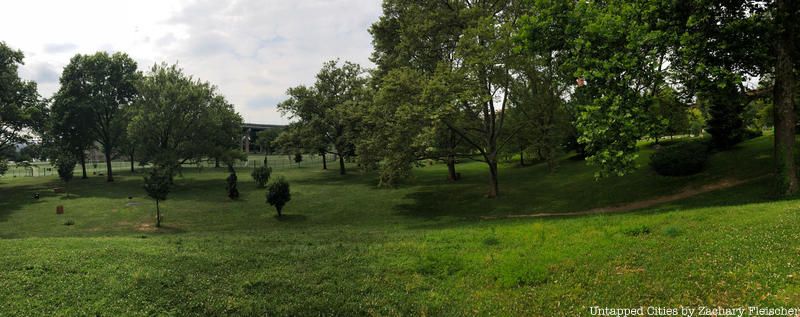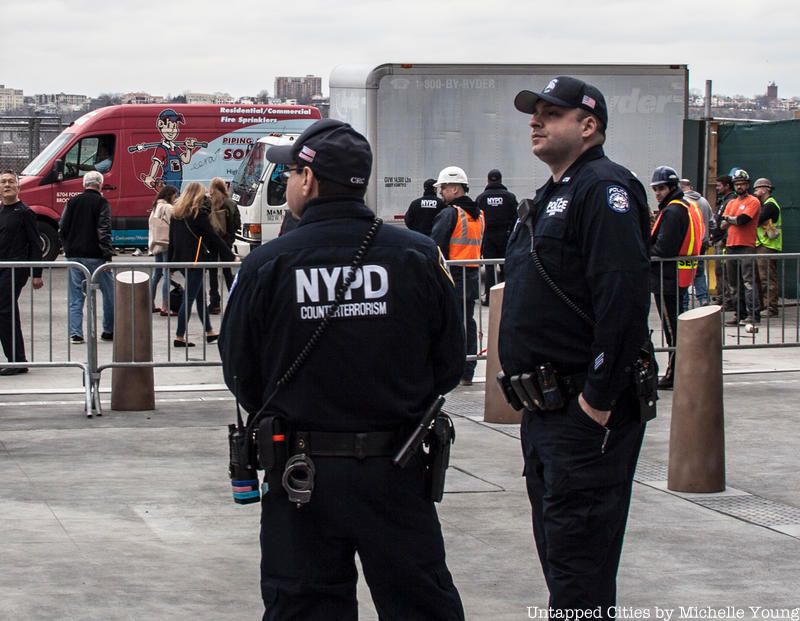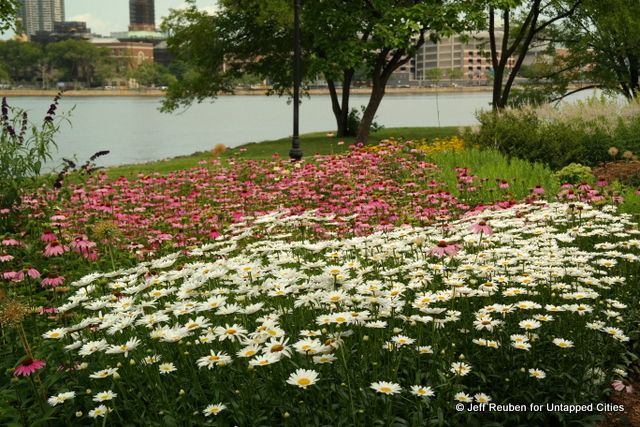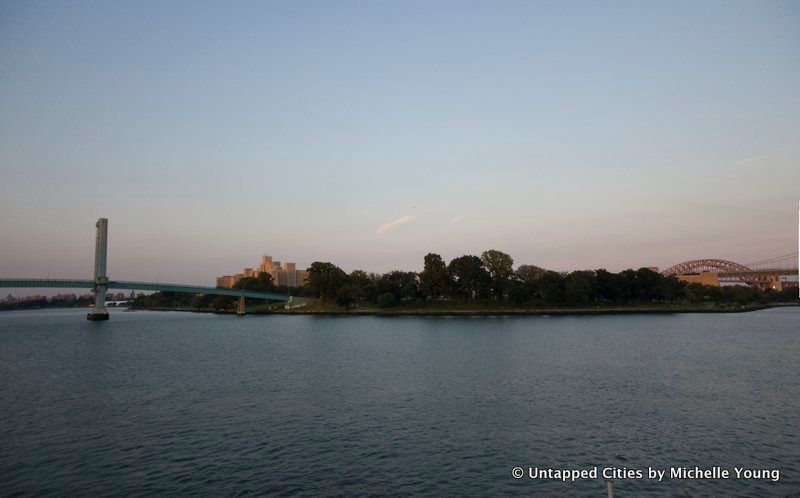NYC’s Forgotten ‘War on Christmas Trees’
Discover how an obscure holiday crackdown affects festive street vendors today!


When most people think of Randall’s Island, they immediately think of the popular Governors Ball Music Festival, which has drawn thousands of people to the island every year since its 2011 launch. However, what many do not know is that Randall’s Island is connected to a lesser-known island, Wards Island. Both islands share a rich history filled with many fascinating secrets and facts. Here are our top ten.
Though usually referred to separately, Randall’s and Wards Island are actually conjoined islands. They are surrounded by the Harlem River separating them from Manhattan and the East River and Hell Gate, which separate them from Queens. The Bronx is separated from the islands by Bronx Kill.
A narrow channel called “Little Hell Gate” formerly separated the two islands. However, in 1930, The Metropolitan Conference of Parks recommended turning the two spaces into parks. Robert Moses made plans to connect Randall’s and Ward using landfills. Thus, this narrow channel was filled by the early 1960s under his direction. Because of this, Randall’s and Wards Islands are now connected.

Director General of the Dutch Colony of New Netherland was the first European “owner” of both islands. Wouter van Twiller was an employee of the Dutch West India Company and the Director-General of New Netherland from 1633 through 1638. Besides Randall’s and Ward, van Twiller also owned Governors Island and Roosevelt Island.
In 1772, John Montresor, an engineer with the British army, purchased Randall’s Island, renaming it “Montresor’s Island.” He lived there with his wife until he was deployed in the Revolutionary War. Both islands hosted military posts during the war by the British, who launched attacks on Manhattan. Montresor’s house was burned in 1777 when he returned to England. He retained ownership until the British evacuated in 1783 and confiscated it.
In 1784, Jonathan Randell purchased one island (Randall’s Island). Jasper and Bartholomew Ward, who were sons of judge Stephen Ward, bought and renamed the island after themselves.

A 1781 British map of Manhattan. Montresor’s (Wards) and Buchanan’s (Randalls) Islands can be seen on the right, flanking Hell Gate. Image via Wikimedia: public domain
Before European settlers arrived, the Native Americans called Wards Island Tenkenas, which meant “Wild Lands” or “uninhabited place.”
The Islands’ first European names were “Great Barent Island” (for Wards Island) and “Little Barent Island” (for Randall’s Island) after Dutch cowherd Barent Jansen Bloom. Bloom was the overseer of Van Twiller’s farm on Wards Island, where he himself was called “Groot Barent” (Great Barent) or “the Barent of huge proportions.” Other names include “Buchanan’s Island” and “Great Barn Island,” said to be corruptions of Great Barent Island. Later owners, like John Montresor, named the islands after themselves.

New York City Asylum for the Insane via Wikimedia Commons from the British Library
In the mid 19th Century, Blackwell’s Island (now Roosevelt Island), which housed the first municipal mental hospital in New York City, was overcrowded with social facilities. The City looked elsewhere and the New York City Asylum for the Insane was founded on Wards Island.
This new asylum opened in 1863. The state took control of the asylum in 1871 and renamed it the “Manhattan State Hospital,” which at the time was the world’s largest psychiatric hospital. It was later named the Manhattan Psychiatric Center.

Scylla Point was previously called “Negro Point,” according to the New York Times. Although there is no definitive agreement on how the name came into common usage, “Negro Point” appeared on maps and charts since 1861. In 2001, Parks Commissioner Henry J. Stern renamed the area “Scylla Point” after a sea monster in Greek lore. This name coordinates with that of “Charybdis Playground” in Astoria Park on the other side of Hell Gate. Charybdis was another Greek sea monster who was paired with Scylla.

Randalls Island was once the home of the now defunct Street Crime Unit, which was a plain clothes anti-crime unit disbanded after the killing of Amadou Diallo. In 2015, the new counterterrorism unit called the “Critical Response Command” was officially stationed at Randalls Island in the old Street Crimes headquarters. This new unit was created in response to recent international terror attacks.

The Randall’s Island Waterfront Garden is a little-known area not too far from Manhattan. The southern part of Randall’s Island, which includes the Waterfront Garden, was originally part of Wards Island when the islands were separate. The garden provides a magnificent setting of flowers, plants, and trees with panoramic river and skyline views. Free and open to the public year-round, the Randall’s Island Park Alliance also offers guided tours by expert horticulturists.
The Randall’s Island Waterfront Garden is also home to perennial plants and flowers, which bloom at different times of year. The garden is near the East River shoreline, creating an open environment with abundant light and air.
The Randall’s Island Green Roof is located atop the Parks Department’s Five Borough Administration Building, just east of Harlem. This green roof laboratory started functioning in 2007 with 7,000 square feet of plantings. Today, it is 29,000 square feet and is equipped with fertile queens, and around 10,000 worker bees. Each hive can grow to have 30,000 bees during its first season. NYC Beekeeping cares for the honeybee hives and uses the facility for education and research.

The Hell Gate Bridge is a railroad bridge built in 1917 connecting Astoria, Queens to Randall’s and Wards Islands. According to a 2005 article, Discover Magazine believes the Hell Gate Bridge is sturdy enough to be the final New York City bridge to collapse if humans were no longer inhabiting Earth.
In 1936, the Triborough Bridge was built to connect the islands to the rest of the city. The bridge is owned and operated by the MTA Bridges and Tunnels, which was once publicly known as the “Triborough Bridge and Tunnel Authority,” and was run from an Art Deco building and the former base of Robert Moses.
The Wards Island Bridge, or the 103rd Street Footbridge, is a pedestrian bridge that connects the islands to Manhattan over the Harlem River. It opened to pedestrians on May 18, 1951. There’s also the Randall’s Island Connector that links the northern end of the island to the South Bronx.

Bryant Park used to be a potter’s field (a cemetery for the city’s poor) in 1823, one year after the land became part of New York City’s jurisdiction. It remained a burial ground until 1840 when the space was transformed into the Croton Distributing Reservoir. Because of this, the hundreds of bodies underneath were moved to Wards Island in the East River. Bodies from Madison Square Park, which was also a potter’s field, were also moved to Wards Island.
Next, check out other Lesser-Known Islands in New York City, The Top 10 Secrets of NYC’s Ellis Island and The Top 10 Secrets of Hart Island, NYC’s Mass Cemetery.
Subscribe to our newsletter